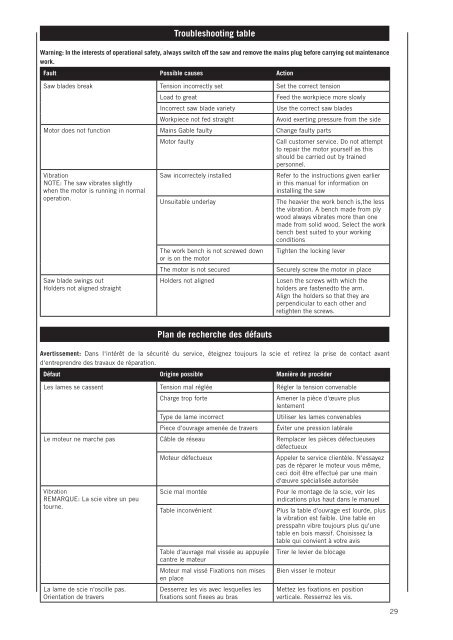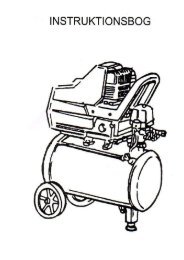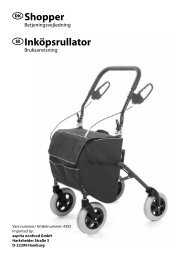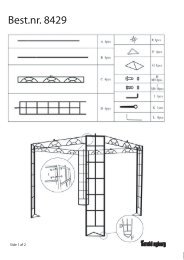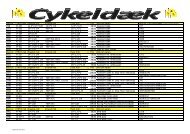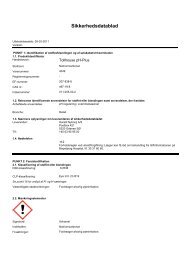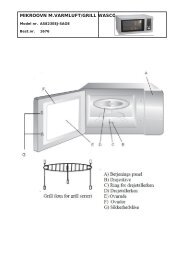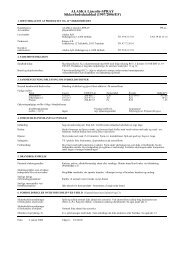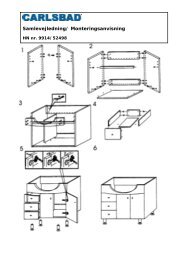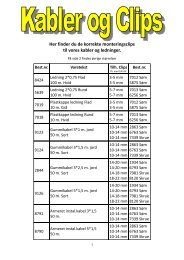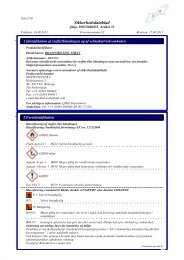You also want an ePaper? Increase the reach of your titles
YUMPU automatically turns print PDFs into web optimized ePapers that Google loves.
Troubleshooting table<br />
Warning: In the interests of operational safety, always switch off the saw and remove the mains plug before carrying out maintenance<br />
work.<br />
Fault Possible causes Action<br />
Saw blades break Tension incorrectly set Set the correct tension<br />
Load to great Feed the workpiece more slowly<br />
Incorrect saw blade variety Use the correct saw blades<br />
Workpiece not fed straight Avoid exerting pressure from the side<br />
Motor does not function Mains Gable faulty Change faulty parts<br />
Motor faulty Call customer service. Do not attempt<br />
to repair the motor yourself as this<br />
should be carried out by trained<br />
personnel.<br />
Vibration<br />
Saw incorrectely installed Refer to the instructions given earlier<br />
NOTE: The saw vibrates slightly<br />
in this manual for information on<br />
when the motor is running in normal<br />
installing the saw<br />
operation.<br />
Unsuitable underlay The heavier the work bench is,the less<br />
the vibration. A bench made from ply<br />
wood always vibrates more than one<br />
made from solid wood. Select the work<br />
bench best suited to your working<br />
conditions<br />
The work bench is not screwed down<br />
or is on the motor<br />
Tighten the locking lever<br />
The motor is not secured Securely screw the motor in place<br />
Saw blade swings out<br />
Holders not aligned Losen the screws with which the<br />
Holders not aligned straight<br />
holders are fastenedto the arm.<br />
Align the holders so that they are<br />
perpendicular to each other and<br />
retighten the screws.<br />
Plan de recherche des défauts<br />
Avertissement: Dans I‘intérêt de la sécurité du service, éteignez toujours la scie et retirez la prise de contact avant<br />
d‘entreprendre des travaux de réparation.<br />
Défaut Origine possible Manière de procéder<br />
Les lames se cassent Tension mal réglée Régler la tension convenable<br />
Charge trop forte Amener la pièce d‘œuvre plus<br />
lentement<br />
Type de lame incorrect Utiliser les lames convenables<br />
Piece d‘ouvrage amenée de travers Éviter une pression latérale<br />
Le moteur ne marche pas Câble de réseau Remplacer les pièces défectueuses<br />
défectueux<br />
Moteur défectueux Appeler te service clientèle. N‘essayez<br />
pas de réparer le moteur vous même,<br />
ceci doit être effectué par une main<br />
d‘œuvre spécialisée autorisée<br />
Vibration<br />
Scie mal montée Pour le montage de la scie, voir les<br />
REMARQUE: La scie vibre un peu<br />
indications plus haut dans le manuel<br />
tourne.<br />
Table inconvénient Plus la table d‘ouvrage est lourde, plus<br />
la vibration est faible. Une table en<br />
presspahn vibre toujours plus qu‘une<br />
table en bois massif. Choisissez la<br />
table qui convient à votre avis<br />
Table d‘auvrage mal vissée au appuyée<br />
cantre le mateur<br />
Tirer le levier de blocage<br />
Moteur mal vissé Fixations non mises<br />
en place<br />
Bien visser le moteur<br />
La lame de scie n‘oscille pas.<br />
Desserrez les vis avec lesquelles les Mettez les fixations en position<br />
Orientation de travers<br />
fixations sont fixees au bras<br />
verticale. Resserrez les vis.<br />
29


